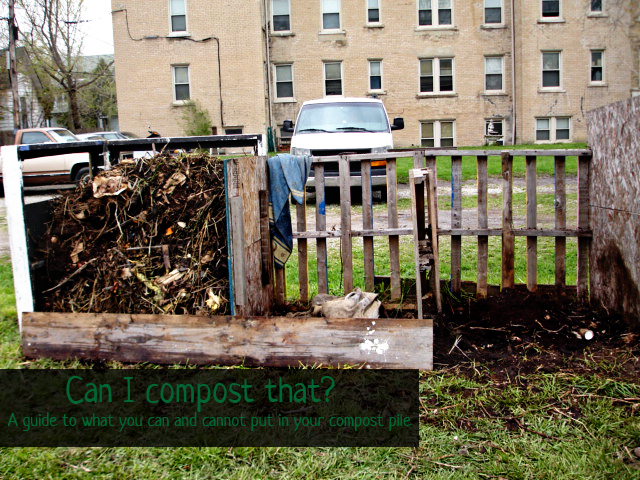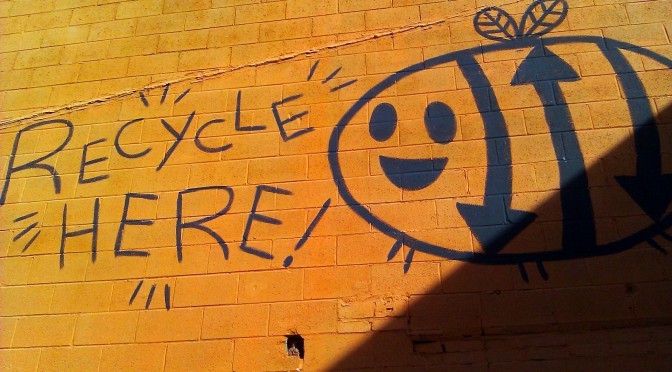
Spring is in the air. The hyacinth are blooming. And you’re probably anxious to give your compost pile a turn. Or at least I am.
Have I mentioned before how much I love compost? Because I love it so much. Because it just does it. Compost just happens. And there is nothing we can do about it. Even when we try our best by putting our waste food into a tied up plastic bag and then sending that bag to be buried in a landfill, it’s still going to turn into compost – just compost that is now in a plastic bag and mixed in with all our other trash that doesn’t break down. And, may I ask, what good is it doing there?*
Have I inspired in you a love for compost yet? Are you itching to start your own pile yet? Or maybe you want to maximize the pile you’ve already started building?
There are plenty of guides on what you can or cannot put into a compost pile out there. I’m going to let you in on a little secret: Most of them are playing it safe and give you a very specific method of making your pile. This isn’t a bad thing. They will help you to build a pile and help you keep from attracting animals and upsetting your neighbors – both good things when it comes to the success of your compost. But compost just happens. Organic materials break down into humus naturally. When we build a compost pile we merely are helping it along.
So what can you put in your pile? Pretty much anything organic. What should you put in your compost pile? Well, depending on where you live and the size of your compost pile, maybe you should be a little more discerning.
Can I compost that? Residential area/small pile/community garden edition
In a residential area you probably don’t want to attract animals to your pile, because they will make a mess of it. You also probably want to keep the smells down from your pile because you’re a good neighbor. Small piles (less than 1 cubic yard) don’t really get hot enough to break some materials down quickly to prevent them from smelling, and smelly compost piles attract animals.
- fresh kitchen scraps (fruits, veggies, egg shells)? yes! – chop it up and it will break down faster
- produce that has gone bad? yes! it’s already started the process
- lawn and garden clippings? yes! – cut it up small and it will break down faster
- weeds? yes! if they haven’t gone to seed yet (otherwise your compost will end up full of weed seeds)
- paper and cardboard? yes! if it isn’t dyed – tear it up and it will break down faster
- cooked fruits/veggies/grains? not if they are cooked in oil, the oil will attract animals and smell
- animal products (meat, bones and dairy)? not unless your ok attracting raccoons, crows, cats, dogs, etc
- compostable “plastics” like those iced coffee cups? no! your pile is not big enough to properly break these down
- chicken scat? yep! chicken poop is a great fertilizer, but it’s too strong to be applied directly to plants. Put it into your compost pile to break down for a while first.
- coffee grounds? yes! coffee grounds are a great addition to your compost pile. In fact, I believe that adding coffee grounds to my indoor compost pile has helped keep the smell down and keep flies away.
Can I compost that? Rural area/large pile edition
If you are able to build a pile that is consistently 1 cubic meter in volume or larger, it probably has enough mass that it will get quite hot in the middle. This enables the pile to break down more complex materials quickly, preventing smelly, animal attracting results. If you’re in a rural area, with greater distance between you and your neighbors, and plenty of wildlife around anyway, you may not care so much about the odor of your pile. Just keep it a bit further away from your house and garden.
- fresh kitchen scraps (fruits, veggies, egg shells)? yes! – chop it up and it will break down faster
- produce that has gone bad? yes! it’s already started the process
- lawn and garden clippings? yes! – cut it up small and it will break down faster
- weeds? yes! if they haven’t gone to seed yet (otherwise your compost will end up full of weed seeds).
If you have a big, hot pile it can handle weeds that have gone to seed. The heat will kill the seeds.
- paper and cardboard? yes! if it isn’t dyed – tear it up and it will break down faster
- cooked fruits/veggies/grains? yes! your big pile will take care of the smell
- animal products (meat, bones and dairy)? yes! but don’t put chicken or fish bones into the pile unless they are ground up. These bones can shatter and be very dangerous if eaten by loved pets or wildlife
- compostable “plastics” like those iced coffee cups? no! your pile is not big enough to properly break these down
Wait! Compostable plastics shouldn’t go in either of the types of compost piles mentioned above? It’s true, unless the cups are going into huge scale compost piles – like the kind that are built from city-wide compost projects, the pile does not get big/hot enough to break down this material and actually compost it. Otherwise the cup will break apart, but the flakes of plastic will remain intact in the humus.
- chicken scat? yep! chicken poop is a great fertilizer, but it’s too strong to be applied directly to plants. Put it into your compost pile to break down for a while first.
- coffee grounds? yes! coffee grounds are a great addition to your compost pile. In fact, I believe that adding coffee grounds to my indoor compost pile has helped keep the smell down and keep flies away.
Do you have any questions about what you can or can’t compost? Leave them in the comments and I’ll be sure to add them to this list!
*Actually, all that food/organic matter that gets thrown into our landfills is finally being put to use in some places. As the matter breaks down it releases methane, and some landfills are starting to harvest that methane to use for energy. Like the bio-gas I wrote about previously in Michigan’s Green Currents program.
…
Interested in reading more about compost here on building earth? Check out the compost tag, for all the articles I’ve written on the subject.
Keep up with building earth by following us on facebook, pinterest, or on @buildingearth on instagram


